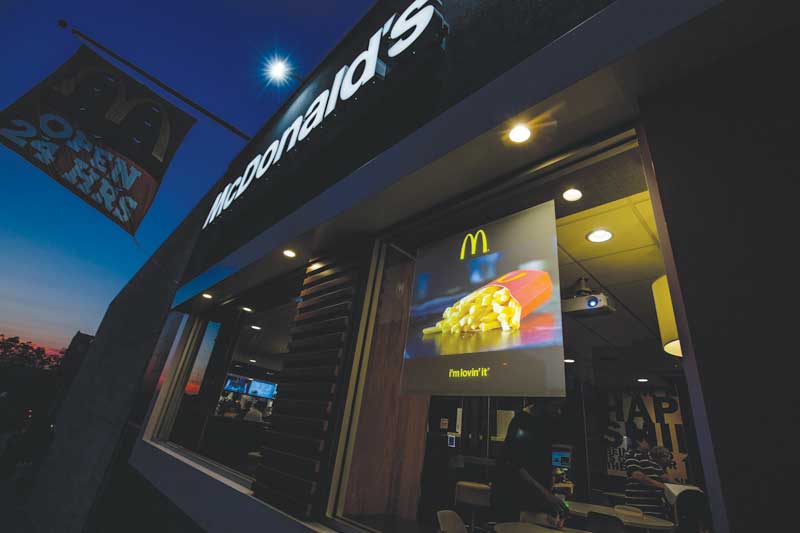Signal transmission
Beyond touch screens, other forms of interactivity are also possible with digital signage. LinkRay technology, by way of example, uses the light-emitting diodes (LEDs) in backlit LCDs to emit special identification (ID) signals. The LEDs flicker on and off at a speed that cannot be detected by the human eye, but can be detected by smartphones’ camera sensors, similar to the scanning of Quick Response (QR) codes.
The signals transmitted in this way, which are tied to the digital signage content, allow a smartphone to access the LinkRay app and call up relevant product details, coupons or other promotional information.
“LEDs are small enough that this technology can be integrated into everything from drive-thru menu boards to tabletop displays,” says Baird, “and the content that appears on the phone is based on the user’s language settings. So, if you’re Japanese, you’ll see the promotions in Japanese text.”
For QSRs, this functionality provides an opportunity to follow up on their digital signage’s ‘call to action’ with incentives for purchases, to facilitate online ordering and to expand their customer relationship management (CRM) efforts.
“It enables businesses to deliver useful information to consumers when they want it and to gain insight into their level of engagement,” says Richard Hsu, senior vice-president (SVP) of Panasonic’s North American food retail digital centre.
The connected restaurant
In these ways, digital signage has become part of an overall, ongoing trend, whereby QSRs are deploying data-driven technologies to provide a more personalized customer experience (CX). Other examples include mobile apps that allow users to order beforehand and then pick up their food when they arrive.
In the near future, computer vision may join the mix to recognize customers’ faces or, at the drive-thru, their licence plates, then ask if they would like to place their usual order, as is already standard practice with online and phone orders for pizza delivery.
With files from Panasonic Canada. For more information, visit www.panasonic.com/ca.






